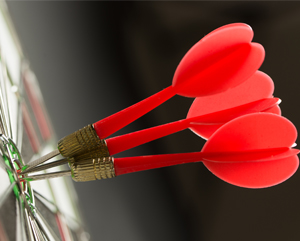How sensory marketing is taking the world by storm
We would take a guess you don’t pay much attention to your senses day to day in the office. Maybe the first taste of hot coffee in a morning. The smell of food that tells your stomach it’s lunchtime. Or the sound of someone else’s phone call across the desk. But what if we told you these senses you take for granted could just be the inspiration you need for your next big marketing move? Don’t believe your eyes and ears? Read on to see how marketers are making sense of senses.
What is sensory marketing?
In a way sensory marketing is exactly what it says on the tin; marketing which uses the senses to sell a product or service. According to The Digital Marketing Glossary however, in sensory marketing ‘the solicitation of the consumer’s senses is mainly done through the product or at point of sale, but it also plays an important role in customer loyalty through user experience.’ It continues ‘the term sensory marketing has especially appeared with the use of “less obvious” senses such as the scent and sound for products and points of sale.’
Why is it important?
Sensory marketing is quickly becoming extremely important for the marketing world in terms of its ability to reach out to consumers, create experiential campaigns and generate interest in a product or service.
According to Marketing Week, ‘in a world where digital devices dominate, engaging consumers by stimulating their senses beyond purely visual or audio advertising has the potential to be incredibly powerful.’ It is argued that in 2016 the popularity of virtual reality marketing, with added sensory experiences, looks set to soar with in-store experiences, 4D cinema and video direct mail forming the basis of new sensory campaigns.
The Harvard Business Review knows that marketers have always engaged with consumers senses to an extent. However, much of the recent sensory boom is spurred by research on “embodied cognition”. Embodied cognition is the idea that ‘without our conscious awareness, our bodily sensations help determine the decisions we make’, with situations as diverse as an individuals perception of a stranger or their desire to conform to a crowd being driven by bodily sensations. For marketing this means that subtle additions to a campaign such as the feeling of warmth, homely smells of baking or fresh coffee, or the sound of a car door shutting can impact heavily on the consumers decision to buy.
Who’s doing it?
A wide variety of brands have already bought into the idea of sensory marketing to boost their sales and enhance their campaigns.
According to The Guardian, a number of iconic brands have already tested sensory marketing in a wide range of industries. Drinks firm Diageo is just one of these big names, with the company ‘launching multi-sensory spaces and apps for brands including Guinness, the Singleton and Johnnie Walker.’ A particular success for Diageo has been their Dublin-based Guinness Storehouse which ‘has attracted more than 12 million visitors since opening in 2000’ by giving customers a chance to learn how to pour the perfect pint and cook with the iconic drink.
Sensory marketing has not just grown to be popular in the food and drinks industry. Industries such as travel are also benefitting from the marketing opportunities on offer. Sensory marketing offers brands the chance to sell an experience or lifestyle as much as a physical product.
Hotel giant Marriott are doing just that with their Teleporter. Using Oculus Rift technology Marriott have encouraged guests to virtually explore holiday destinations in 4D. This includes the feeling of sun on their face and sea spray on their skin. Most recently Marriott have continued their love affair with sensory marketing with the release of their VRoom Service. It allows guests to order virtual reality experiences in their rooms. They can also access VR Postcards and experience a 360 degree 3D travel film. These have so far been shot on location in Chile, Rwanda and Beijing.
Will you be engaging the senses?
Sensory marketing is opening a wealth of creative possibilities for marketers. It’s perfect for engaging consumers and turning marketing from a simple advert to a memorable experience. We’ve already seen some outside the box thinking on display by some of the biggest brands. 2016 may see an ever-increasing trend toward sensory marketing.
Want to discuss more ideas for your upcoming marketing campaigns? Get in touch!




